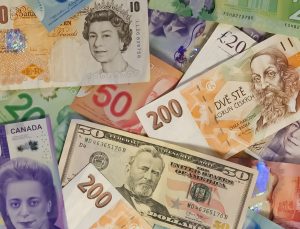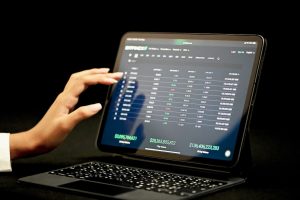Forex trading is a complex and ever-evolving market that requires traders to stay up-to-date with the latest trends and techniques. One of the most important aspects of Forex trading is understanding margin. Margin is the amount of money that a trader needs to have available in their account in order to open a position. In this article, we will explore what margin is in US Forex trading platforms and how it works.
What is Margin?
Margin is essentially a collateral that is required by the broker in order to maintain a position in the Forex market. It is a percentage of the total trade that the trader must put up as collateral. The margin is typically determined by the broker and can vary depending on the currency pair being traded.
For example, if a trader wants to open a position for $100,000 and the margin requirement is 1%, then the trader will need to deposit $1,000 as collateral. The remaining $99,000 is borrowed from the broker. This is known as leverage.
How does Margin work in Forex Trading?
In Forex trading, margin is used to control larger positions than the trader would otherwise be able to with their available capital. This is known as leverage. The amount of leverage offered by the broker will depend on the account type and the currency pair being traded.
For example, if a trader has an account with a leverage ratio of 100:1, then they can open a position for $100,000 with only $1,000 in their account. This means that the trader is using 100 times more leverage than their available capital.
Margin Requirements in US Forex Trading Platforms
Margin requirements in US Forex trading platforms are determined by the National Futures Association (NFA) and the Commodity Futures Trading Commission (CFTC). The NFA and CFTC regulate Forex trading in the United States and require brokers to adhere to certain margin requirements.
The minimum margin requirement for Forex trading in the US is 2%. This means that the trader must have at least 2% of the total trade value in their account as collateral. For example, if a trader wants to open a position for $100,000, then they must have at least $2,000 in their account as collateral.
However, brokers may require higher margin requirements depending on the currency pair being traded and the account type. This is known as margin call. A margin call occurs when the trader’s account falls below the required margin level. When this happens, the broker may issue a margin call and the trader will need to deposit more funds into their account in order to maintain their position.
Margin Trading Risks
Margin trading can be a high-risk strategy as it involves borrowing money from the broker to control larger positions than the trader would otherwise be able to with their available capital. This means that losses can be magnified if the trade goes against the trader.
If the market moves against the trader, the broker may issue a margin call and the trader may be required to deposit more funds into their account in order to maintain their position. If the trader is unable to deposit more funds, then the position may be closed out by the broker.
Conclusion
Margin is a crucial aspect of Forex trading as it allows traders to control larger positions than their available capital. Margin requirements in US Forex trading platforms are determined by the NFA and CFTC and brokers may require higher margin levels depending on the currency pair being traded and the account type. However, margin trading can be a high-risk strategy and traders should understand the risks involved before using leverage in their trades.





